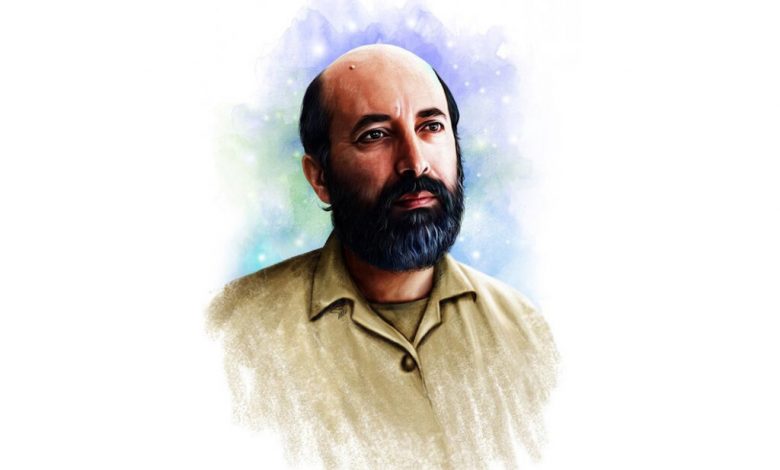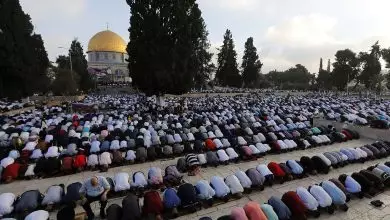EXC: From Texas to Dehlavieh: A look at the life of Martyr Mustafa Chamran

“I may not be able to eliminate this darkness, but I will show the difference between dark and light and truth and evil with this small ray. He who is looking for light, no matter how small this (light) is, it will be big in his heart.” His wife, Ghadeh, quoted him as saying this. Ghadeh said she fell in love with him and his outlook on life when she read these sentences at the bottom of a drawing. That drawing was an all-black background with a small candle burning in the middle. The light produced by it seemed very faint. Perhaps few people can believe that a military guerilla fighter who always fought in the battlefield with a firm strength could have such a gentle, magnanimous spirit. But his personality was a combination of opposites. He was a man for all seasons, Dr. Mustafa Chamran.
Mustafa was born in October 1932 in one of Tehran’s districts. After graduating from high school when he was around 21, he ranked 15 in the university entrance exam and was admitted to the University of Tehran in the field of Electromechanical Engineering. Five years later, he received a government scholarship for the Texas A&M University, after which he earned a PhD in Electronics and Plasma Physics with high honors from the University of California, Berkeley. Although being in the situation he was in was the dream of many young people, Mustafa preferred struggle on the path of God for the values and principles that he believed in to a life of pursuing his own personal welfare that had nothing to do with his ideals.
The Islamic Revolution of Iran had not yet been victorious before his move. Nonetheless, he used to follow the political news and engage in political activities simultaneously with his studies. With this same spirit in the United States and the cooperation of some of his friends, he founded the American University Muslim Students Association for the first time and was one of the founders of the Iranian Student Association in California. Gradually, these activities became an excuse for his scholarship to be rescinded by the monarchy in Iran at that time. But Mustafa was not a man to be stopped by these restrictions. He joined NASA, which was a well-paying, reputable job.
Mustafa was a good writer. Many manuscripts from different years of his life remain from him today, and these have been published in several volumes. In one of his prayers, he supplicates God in this way, “Oh God, the Almighty! I should be the best in science lest the enemies make sarcastic remarks about me. I should prove to those stone-hearted people who flaunt their knowledge to spite others that they will never even be the dirt beneath my feet. I must bring all those arrogant, proud, ignorant people to their knees. Then I shall be the humblest, most modest person on earth.”
Sitting idly did not make sense to him. Fighting and striving for the truth gave meaning to his life whether it was when he conducted a sit-in with several other people at the UN until agents finally forcibly evicted them, an act considered very risky for a scientist and scholar like him; or when he decided to leave the United States for Egypt to study guerrilla and partisan warfare. His brother described his sit-in in this way, “He was an outstanding, capable scientist. Once, they organized a sit-in at the praying site in the UN building. They came and arrested him there. As they pulled him away, his head struck each of the stairs. This sit-in had lasted for a week. He wrote a letter to me while he was there in which I remember he said, ‘I am running out like my fountain pen. (The ink in his fountain pen had run out. He put a little water in it so that he could continue writing, but the ink had become faint.)’”
His presence in Egypt was completely secret and kept hidden. Despite the fact that he received rigid military training there for two years, no one was aware of his presence in that country, even the most equipped espionage services in Europe and the US! He remained there until the presidency of Anwar Sadat after which he returned to the US. But he was unable to last in the US for long. In his memoirs, he describes the feelings he had in those days in this way, “The large country of the US became too tight for me. The environment in the US seemed small. The sky seemed short. The ceiling felt it was weighing me down, and I could not breathe among the colonizers and capitalists.”
Since the situation was not suitable for him to be able to carry out military activities in Iran, he went to Lebanon with the intention of fighting Israel and liberating occupied Quds. In southern Lebanon, in the border area with Israel, he engaged in training manpower in an orphanage with the cooperation of Imam Musa Sadr. Due the extremely difficult situation in Lebanon, Chamran’s wife got separated from him and moved back to America.
The result of him staying seven years in Lebanon was the formation of the Supreme Islamic Shi’a Council and an organization by the name of “Amal” (the Resistance Forces of Lebanon), which was an organization for military and defensive training. In Lebanon, Chamran became acquainted with a lady named Ghadeh Jaber, and this acquaintance led to their marriage. Ghadeh recounted the following memory about a trip before their marriage, “I remember I accompanied him on one of his trips to a village. In the car, he gave me a gift. It was his first gift to me and we hadn’t gotten married yet. I became very happy and opened it right there. It was a scarf. A red scarf with big flowers on it. I was surprised, but he smiled. I started wearing a scarf from then and it stayed.”
Following the victory of the Islamic Revolution in 1979, Mustafa returned to his homeland after 23 years. He returned in order to put his many years of experiences at the service of Islam and Iran. But later in the wake of Imam Musa Sadr’s abduction, he thought of returning to Lebanon to help improve the critical situation there. He took his small suitcase and went to Imam Khomeini in order to obtain his permission. Imam’s reply was short, “No, stay in Iran. If the situation in Iran improves, all of Lebanon and other areas will improve as well.” And so he stayed.
The night of July 18, 1979 was a difficult night in the city of Paveh. Komala and the anti-revolutionary forces had besieged the city and the majority of the Islamic Revolutionary Guard Corps soldiers had been massacred. The entire city and the surrounding areas had fallen into the hands of the enemy. That night, the fate of Kurdistan depended on Paveh. If the city had fallen to the enemy, Kurdistan would have fallen as well. Chamran was in contact with the police in Paveh through a wireless set. He also wrote a letter in the Ministry of Defense in order to inform Imam Khomeini of the difficult, complicated situation there. As the Commander-in-Chief of the Armed Forces, Imam Khomeini ordered for all Armed Forces to go to Paveh without them needing to obtain permission from their superior commander. He put Mustafa in charge of the mission. By the morning, the city had been secured by God’s grace and due to the exceptional military acumen of Chamran. Following this success, he was appointed Minister of Defense. Later, he was chosen as one of the representatives from Tehran for the Islamic Consultative Assembly.
With Saddam’s invasion of Iran, he went to the southern cities of Iran to closely organize and command the forces, and he established the Ahwaz Irregular Warfare Headquarters there. Contrary to typical war commanders, he was always in front of his soldiers. It never occurred to him to follow the news from a distance in a command room and to issue orders from there. Even when he was injured in one of the operations, he refused to be transferred to Tehran for treatment. He returned to the field with a cane after a few days of rest. Ultimately, at the age of 48, he was wounded by mortar shells during a mission in the Dehlawieh war zone. Dehlawieh is a village in northwestern Susangard in the Khuzestan Province. He was martyred while being transported for treatment.
Sayyid Ali Khamenei, the Leader of the Islamic Revolution, introduced Dr. Mustafa Chamran’s personality as being a perfect role model, “Martyr Chamran is a role model. He was a scholar in the true sense of the word. He was knowledgeable and well-educated, and at the same time, he was a true soldier and truly fought on the path of God. Worldly, material concerns and positions were not important for him. Wealth and fame were not important for him. Who would be introduced as having gotten the job done was not important for him. He was just, frank, brave and tough. Despite his gentle, sympathetic, poetic and mystic nature, he was a tenacious soldier in the field of battle.”







